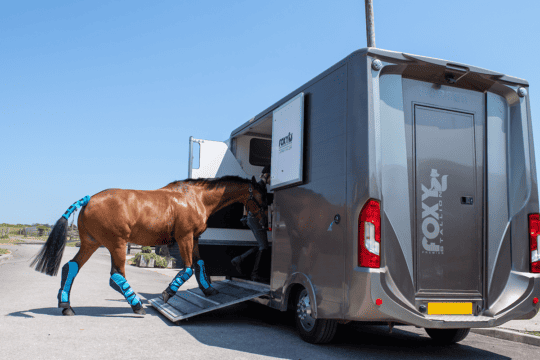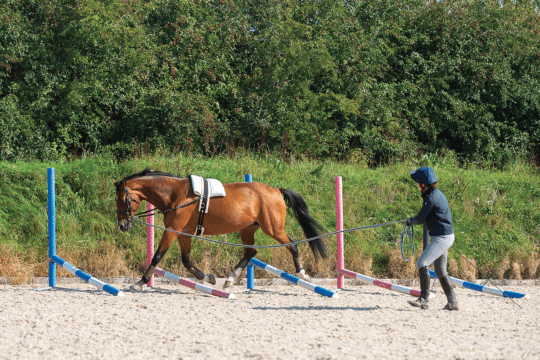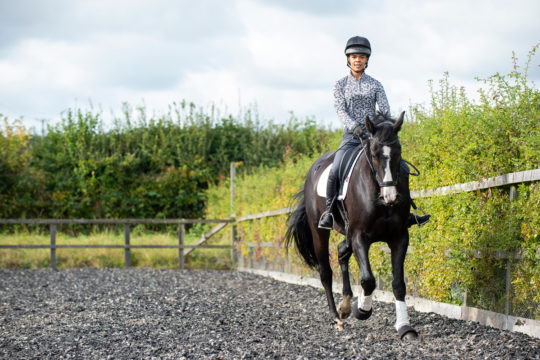Lucinda Green’s guide to great groundwork
Posted in Riding Schooling and Training Groundwork and Handling
Six-time Badminton Horse Trials winner Lucinda Green shares her advice for developing a partnership with your horse from the ground to improve your ridden work
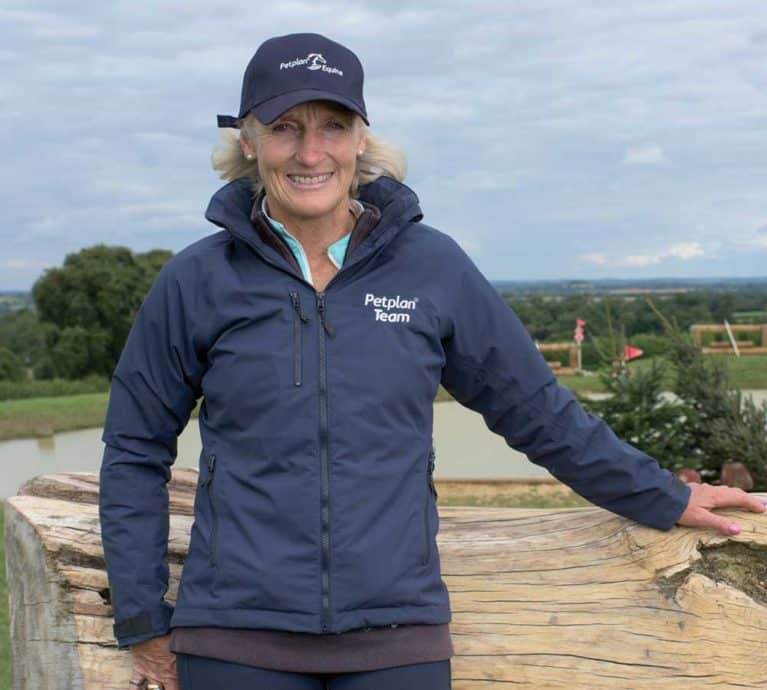
Our expert: With a record six Badminton wins, eventing legend Lucinda Green balances a prolific teaching career with competing and contributing to eventing governing bodies.
It’s fair to say that the COVID-19 pandemic greatly altered our lives. None of us wanted to contribute further to the pressure on the NHS by doing anything that carried unnecessary risk. For this reason, many of us chose to scale back our riding temporarily, exploring new ways to exercise and interact with our horses from the ground, instead. While in England we’ve been given the green light to get back on board – with Northern Ireland, Scotland and Wales expected to follow suit in due course – that doesn’t mean we can’t continue to work our horses from the ground.
So much of successful cross-country riding is about the confidence between horse and rider and their partnership – this trust and respect are the fundamental basics of good riding and training. All of these can be practised from the ground.
TOP TIP Always wear a hat, gloves and sturdy boots when trying any groundwork with your horse.
Learning to lead
Far too many horses walk all over their owners when led in-hand, they invade their personal space and take advantage of their own strength to play up. Working on this area will not only keep you safe, but it’ll also build your horse’s respect for and confidence in you.
Those with the most experience at handling horses on the ground are the stallion experts, who display endless patience but utter firmness with their charges. I spoke to David Redvers, who stands some of the world’s most exciting stallions at his Tweenhills Stud.
He said: “The thing with horses is that you can’t nag them with lots of little pulls and pushes of the leadrope. They’re much stronger than you and using your weight against theirs is counterproductive. As the great dog trainer Barbara Woodhouse always demonstrated, a quick, sharp lesson – a flick of your hand – shows your horse that he needs to follow your lead. Everything else follows on from that. Every relationship in life needs boundaries, and you can set yours with your horse without fuss and a quick reaction.”
Long-reining and lungeing
You can do lots of very beneficial training for cross-country by long-reining your horse across rough terrain, up and down banks, over ditches and in and out of water, but it requires real skill to do well and could be unsafe and unhelpful if done by someone without the necessary experience. However, you could easily teach yourself the basics of long-reining – it’s very good exercise for you as well – and then to lungeing with two reins. It’s a brilliant skill to master.
There are plenty of resources available to help you learn how to long-rein, but most important is to do everything as safely as possible.
To start with, you’ll need your saddle, long lines and a lunge cavesson, Attach the long-lines to a lunge cavesson, rather than directly to the bit, to start with, and remember to run the lines through the stirrups to keep them high up and to avoid them forming loops that your horse might step on if things don’t go to plan. Position yourself out of kicking distance behind your horse, but close enough so you can maintain a consistent contact from your hands to – eventually – the bit.
TOP TIP Have a helper on hand when you first start long-reining to help you teach your horse to halt and turn via the long-reins. Some horses may feel a little anxious to start with, so your helper will provide a confidence boost for you both.
If you develop this into lungeing with two reins, remember that the key thing is always to keep control of your horse’s head and never to let him turn his tail towards you. Even the most well-behaved horse can react unexpectedly to an outside influence.
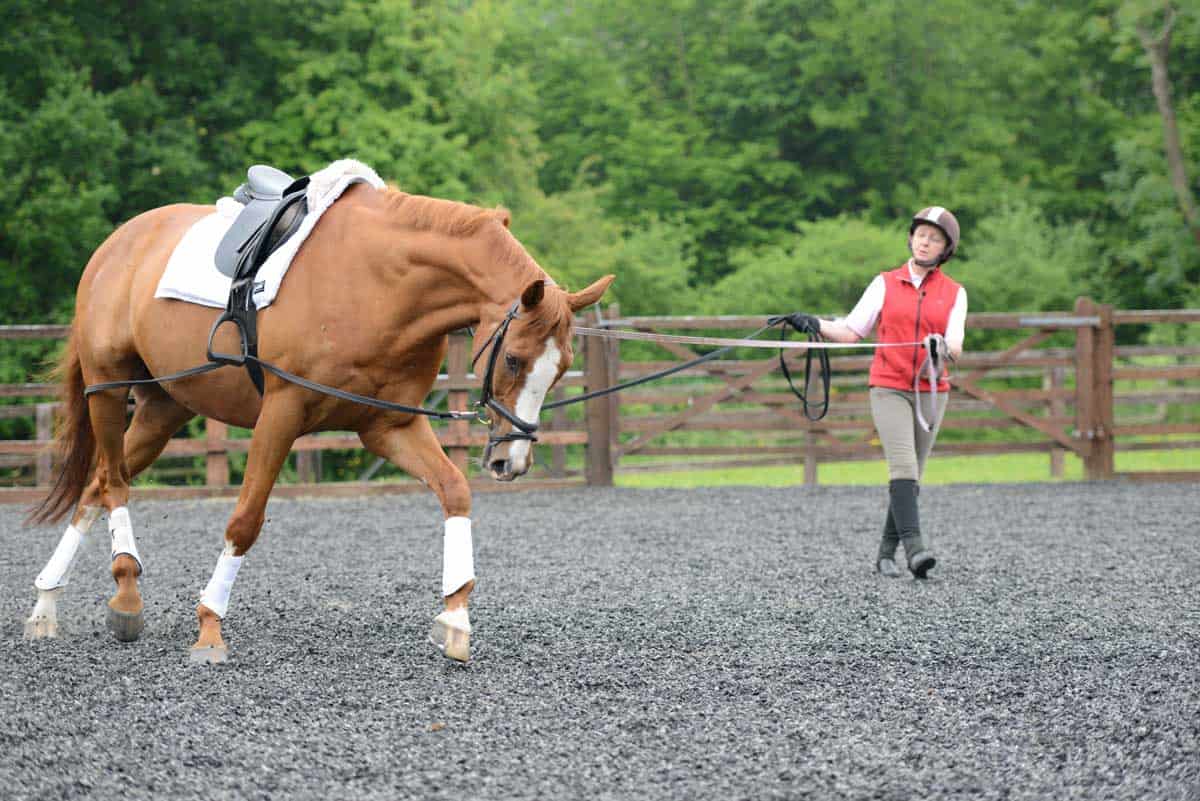
Photo credit: Bob Atkins
In-hand polework
There are plenty of fun strengthening exercises you can do in-hand over poles to improve your horse’s coordination, his ability to carry himself and his awareness of where he’s putting his feet. Here are a few to get you started…
- scatter poles randomly around the school and ask your horse to thread his way through them. Give him time to think about where his feet should be and if he starts to rush, slow things down and regain his focus
- place three poles end to end in a long line and weave your horse through them in a gentle serpentine, ensuring he always has one foot on either side of the poles – if he has all four feet on one side then you’re not doing the exercise effectively. This keeps his brain engaged and encourages him to think about where to put his feet
- put a series of poles down 60cm apart in a line, raising one end of each pole alternately 5–10cm off the ground and walk your horse down the line. The close spacing encourages your horse to be a little more active in his steps. He might knock a few to start with, but he’ll quickly learn what he needs to do. This is a super strengthening exercises and teaches coordination
Mount with ease
Something many of us don’t take the time to teach our horses is to stand while we mount. Help from someone on the ground is really useful to reinforce the message you’re trying to send. This is a situation when you have to use your judgement – don’t insist that your horse stands next to the mounting block for too long to begin with. When you get what you’ve asked for, reward him and move off. This might be just five seconds to start – be progressive with what you ask for and don’t push your luck.
When you feel ready to get back in the saddle and progress your ridden training further, there are lots of low-risk activities you can try that will pay off in a big way, without having to spend hours going round in circles. This straightforward jumping exercise will pay dividends to your training with minimal risk.
Simple jumping exercise
While it can seem very intimidating, jumping from walk is fantastic for both horse and rider – without speed, your horse must engage his hindquarters and produce more lift in his jump. It teaches him to think and be careful and gives you so much time to work out what to do with your body, legs and hands and to perfect your position. It makes you maintain your balance slightly behind your horse and to sit quietly and wait for the fence. Here’s how to get started…
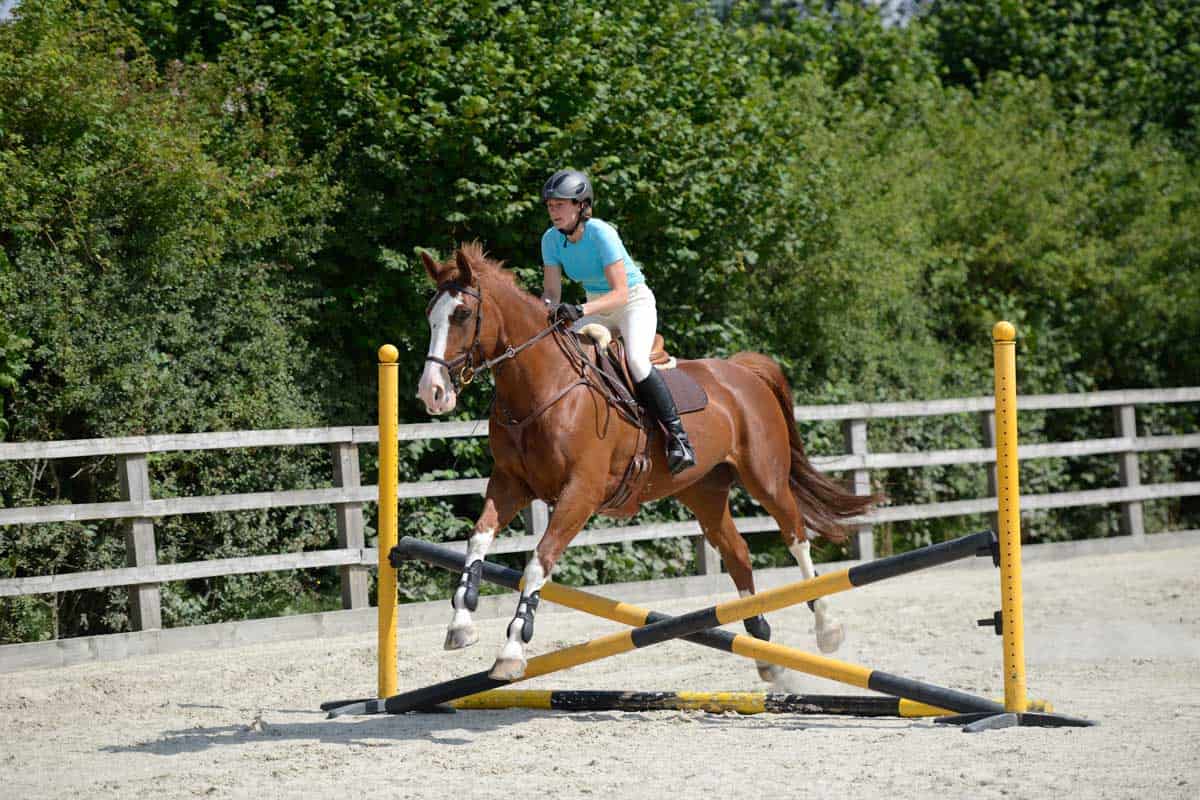
- Keep the fences very small to begin with to build your confidence but remember that your horse can easily jump around 90cm out of walk – so don’t worry that you’re asking him to do something difficult.
- Engage the walk so that it’s positive and active without being hurried. Unless the walk is workmanlike and connected, the jump will soon develop into a flop, but if the walk is under too much pressure it can disintegrate into worry in the final stride or two – the last stride must be walk. Trotting is cheating!
- Rock your body back a little and squeeze with your legs. Be prepared to be left behind and slip the reins so you don’t catch your horse’s mouth – this is crucial.
- Don’t worry about knocking the fence down to start with. Your horse will get the hang of it and soon begin to enjoy it – it’s a super confidence-giver for both of you.
Whatever discipline you enjoy with your horse – whether an avid eventer or happy hacker – taking your horse’s work back to basics will have a profound effect on your riding and his way of going. Spend a little time getting things right now, and you’ll have set yourself up for success in the future.
With thanks to Petplan Equine for their help with this feature, petplanequine.co.uk




